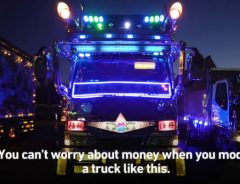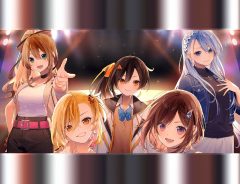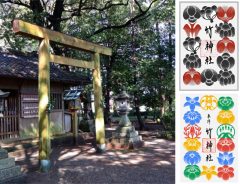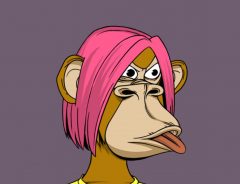Related Article
-

Dekatora: The Tricked Out Japanese Truck Culture That Brings Transformers To Life
-

World’s first NFTs of Vtuber visual assets go on sale; Cocoa Domyoji & Saki Ashizawa in Round 1
-

Hand-drawn traditional Kyoto Yuzen textile patterns are turned into NFT products
-

nanakusa: Japan’s first NFT marketplace with a crypto artist registration system launches beta
-

Shrine in Mie Prefecture offers free Goshuin NFT as part of revitalization efforts
-

Gamer’s World – NFTs: Crypto Greed or the Wave of the Future?



The year is 1975, maths professor Erno Rubik files a patent for his 3D cube puzzle creation, mood rings have entered the market and are set to become one of the biggest fashion fads of the decade, and in Japan, Toei Film Company is about to release the first of a set of films that, unbeknownst to them, will inspire the flashy auto subculture of Dekotora.
With an exterior clad in professionally painted side panels, flashing neon lights and a variety of chromatic embellishments, it is pretty hard to miss a Dekotora truck if one should pass by. And, if you’re lucky enough to hitch a ride in one, you’ll find that decoration isn’t limited to just the outside, with the interior of many pimped out in lavish trimmings such as printed curtains, traditional tatami mats, and even chandeliers.
These decorated trucks trace their origins back to “Torraku Yaro” – a series of 10 action-comedy movies produced by Toei Film Company between 1975 and 1979. The series followed two truckers, Momojiro Hoshi (played by Bunta Sugawara) and Kinzo Matsushita (played by Kinya Aikawa), as they adventure across Japan in their extravagantly decorated trucks.
The film series was an instant hit and in the hopes of being cast in one the productions, truck drivers began decorating their own vehicles in styles similar to those depicted in the films.
Decline of a Subculture
It’s now been almost 5 decades since Dekotora first rumbled on the roads of Japan, and although once a overwhelmingly common sight in towns and on highways across the country, soaring costs of maintenance and pressure from those who found the trucks “intimidating” lead to the decline of the subculture in the 90’s.
Rubbing salt into the wound was the introduction of the “Diesel Vehicle Regulations law” in 2001, which prevented old-fashioned trucks such as those used in Dekotora from driving in Tokyo. Because of this, many owners had to replace their Dekotora with newer vehicles, and the subculture shrank to just a handful of dedicated truckers who now form the Utamarokai – an association that focuses on the preservation of the trucks as well as charitable activities such as raising funds for those affected by natural disasters in Japan.
On the opposite end of the spectrum, the appeal of Dekotora has spread to fans overseas and it seems at times that the trucks could make an eventual comeback; In 2016, fashion brand GUCCI used Dekotora in the start of their 100th anniversary celebration campaign, and at the 2020 Tokyo Olympics guitarist Tomoyasu Hotei performed onboard a stage-on-wheels resembling an extravagantly decorated truck.
This sudden interest in Dekotora has prompted the head of the Utamarokai – Junichi Tajima – to look into new ways that they can keep the subculture alive and further fund the costs of their disaster relief activities. What they’ve come up with is an NFT collection of moving images depicting the trucks switching all of their glitzy lights on and off.
The Dekotora NFT collection consists of three NFTs which will be on sale until the 30th of April 2022. Further information can be viewed here, and the link to the OpenSea collection is here.
The Utamarokai plans to donate part of their proceeds collected from selling their NFTs to disaster-inflicted areas in Japan.
First time buyers of the NFTs will receive benefits, such as passenger seats at Dekotora events and access to limited edition Dekotora goods from the association. These benefits are only available to the first purchasers of Dekotora NFTs and are not transferred to secondary buyers.